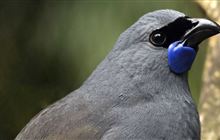The Government is set on restoring the dawn chorus and giving nature more of a helping hand, Minister of Conservation Eugenie Sage and Associate Minister for the Environment Nanaia Mahuta said today as they launched a new action plan for biodiversity in Wellington this morning.
Conservation Minister Eugenie Sage launched Te Koiroa O Te Koiora – Our shared vision for living with nature, for all New Zealanders to help shape our biodiversity strategy for the next 20 years.
“New Zealand, like the rest of the world, is losing species and ecosystems at a rate never seen before,” Eugenie Sage said.
“In the 750 years since humans arrived here, more than 50 native bird species have been made extinct, three frogs, at least three lizards, one freshwater fish, four plants and an unknown number of invertebrate species. Today more than 4000 of the native plants and wildlife are threatened or at risk of extinction.
“It is urgent to turn this loss around, including by restoring habitats and removing invasive predators so indigenous nature can survive and thrive.
“Nature is at the heart of our success, livelihoods and wellbeing as New Zealanders. It is valuable for its own sake and provides us with so many benefits from clean water, pollination, flood protection, food production, and the landscapes that are the basis for our tourism industry.
“The new strategy will commit to a clear vision and specific measures to better protect Aoteaora’s unique indigenous plants and wildlife and special places, including our oceans. The set of goals includes that by 2050:
- Aotearoa is free from stoats, possums, and rats
- populations are increasing for all threatened native species
- by-catch of seabirds, corals, and marine mammals is reduced to zero.
“The main threats to indigenous biodiversity are introduced predators including possums, rats and stoats, habitat destruction such as wetland drainage, unsustainable land and water use, diseases such as myrtle rust and the impacts of climate change.
“There are also many bright spots, such as the DOC’s Tiakina Ngā Manu programme. Its landscape scale aerial and ground pest control and intensive management is increasing the breeding success of native birds.
“There has also been significant success where there has been investment in recovery efforts. The threat status of 20 bird species, including rowi kiwi, takahē and mōhua/yellowhead, has improved since 2012 as a result of pest control work on public conservation land.
“We all need to do more on public, private and Maori land so nature can thrive and we have healthy ecosystems from the mountains, down the rivers and out to sea,” Eugenie Sage said.
Work on a new New Zealand Biodiversity Strategy, led by DOC, links with work on a proposed National Policy Statement (NPS) on Indigenous Biodiversity, led by the Ministry for the Environment.
“The NPS is a regulatory tool under the Resource Management Act and the proposed NPS on Indigenous Biodiversity will strengthen regulations and Maori decision-making relating to indigenous biodiversity,” Nanaia Mahuta said.
"The proposed NPS will also incorporate RMA requirements to identify, map and protect significant areas of indigenous biodiversity, including the use of standardised criteria, a suite of policies on managing effects, and targets to encourage restoration of biodiversity.
“New Zealanders will hear a lot about biodiversity over the coming months and it is important people have their say and be part of these conversations,” Nanaia Mahuta said.
Public consultation on the Biodiversity Strategy Discussion Document will include workshops and online submission processes and is open today and runs until 22 September.
The proposed NPS Indigenous Biodiversity will be released for public consultation later in the year.
People can have their say on the strategy here: www.doc.govt.nz/biodiversity-consultation


